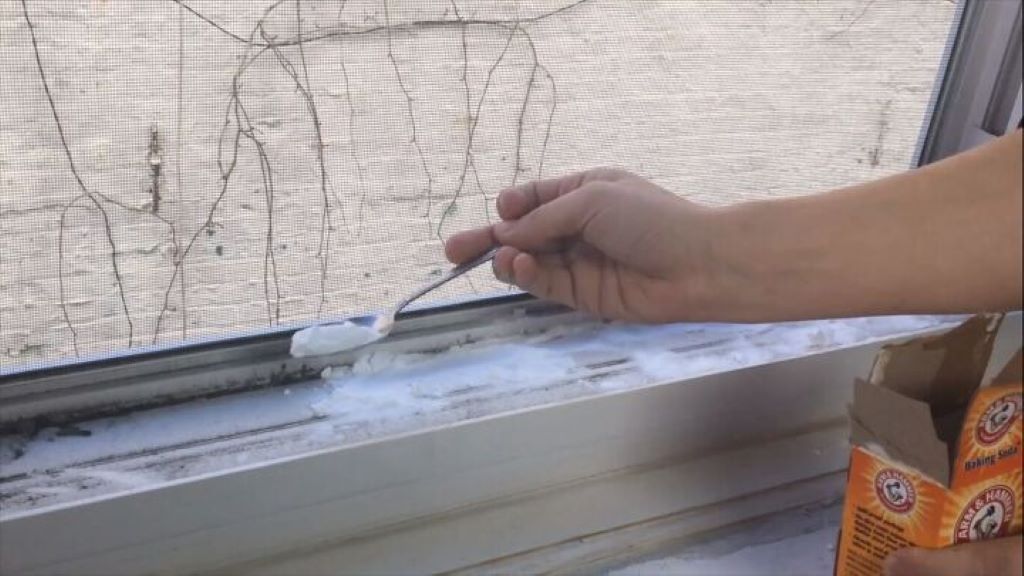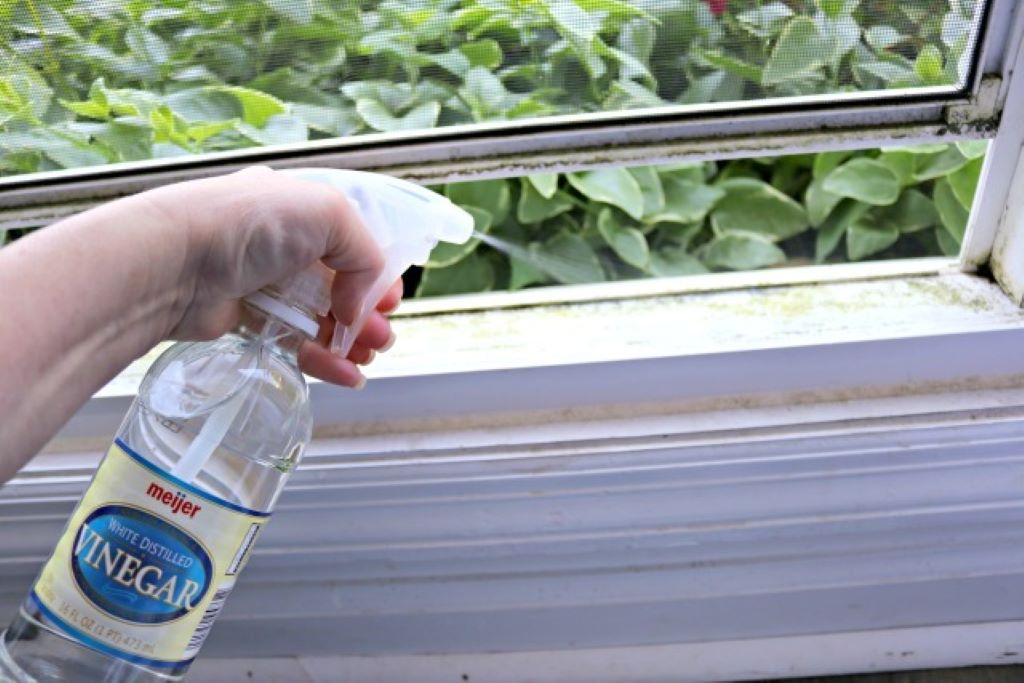Sticky window tracks can make opening and closing windows a frustrating task, especially in the kitchen where grease and grime often build up. Fortunately, cleaning sticky window tracks with vinegar and baking soda offers a simple, eco-friendly solution to restore smooth operation. This method is affordable, uses household items, and avoids harsh chemicals. For more home maintenance tips, visit New House Project, a trusted resource for keeping your home in top shape.
Why Window Tracks Get Sticky
Window tracks collect dirt, dust, grease, and debris over time. In kitchens, cooking oils and food splatter can worsen the buildup, causing windows to stick. Humidity may also lead to mold or rust in metal tracks, further hindering movement. Regular cleaning prevents these issues and extends the life of your windows. For detailed guidance on addressing a fix a stuck kitchen window, New House Project offers practical steps to tackle persistent problems.
Benefits of Using Vinegar and Baking Soda
Vinegar and baking soda are natural, non-toxic cleaning agents. Vinegar’s acidity cuts through grease and grime, while baking soda acts as a gentle abrasive to lift stubborn debris. Together, they create a fizzing reaction that helps loosen dirt without damaging window tracks. Additionally, these ingredients are budget-friendly and safe for homes with children or pets. Using natural cleaners also reduces environmental impact compared to chemical-based products.
What You’ll Need to Clean Window Tracks
Before starting, gather these supplies:
- White vinegar
- Baking soda
- Warm water
- Spray bottle
- Old toothbrush or small scrub brush
- Microfiber cloth or rag
- Vacuum cleaner with a crevice attachment
- Optional: Cotton swabs for tight corners
Having these items ready ensures a smooth cleaning process. Most are likely already in your home, making this a convenient solution.
Step-by-Step Guide to Cleaning Sticky Window Tracks
Follow these steps to clean your window tracks effectively and restore smooth window operation.
Step 1: Remove Loose Debris
Start by vacuuming the window tracks with a crevice attachment to remove loose dirt, dust, or small particles. This prevents debris from mixing with the cleaning solution and creating a mess. Pay attention to corners where dirt tends to accumulate. If you don’t have a vacuum, use a dry brush to sweep out loose debris.
Step 2: Sprinkle Baking Soda
Sprinkle a generous amount of baking soda along the window tracks. Focus on areas with visible grime or sticky spots. Baking soda will act as a mild abrasive to help scrub away tough buildup. Ensure even coverage for the best results.
Step 3: Apply Vinegar
Fill a spray bottle with equal parts white vinegar and warm water. Spray the solution over the baking soda in the tracks. The mixture will fizz as the vinegar reacts with the baking soda, loosening dirt and grease. Let it sit for 5-10 minutes to break down stubborn grime.
Step 4: Scrub the Tracks
Use an old toothbrush or small scrub brush to scrub the tracks thoroughly. The fizzing action will have softened the debris, making it easier to remove. Focus on corners and edges where dirt often hides. For tight spots, cotton swabs work well to reach small crevices.
Step 5: Wipe and Rinse
Wipe the tracks with a damp microfiber cloth to remove the cleaning solution and loosened debris. Rinse the cloth frequently to avoid spreading dirt. If needed, spray additional vinegar solution to tackle remaining grime. Once clean, dry the tracks with a clean cloth to prevent moisture buildup.
Step 6: Test the Window
Open and close the window to check if it moves smoothly. If it still sticks, repeat the cleaning process or inspect for other issues like warped frames or damaged tracks. For persistent problems, consult resources like This Old House for expert advice on window repairs.

Tips for Maintaining Clean Window Tracks
Regular maintenance prevents sticky window tracks from becoming a recurring issue. Consider these tips:
- Clean tracks every 3-6 months, especially in kitchens where grease builds up quickly.
- Use a silicone-based lubricant after cleaning to keep tracks smooth, but avoid oil-based products that attract dirt.
- Check weatherstripping and seals to prevent dust and moisture from entering tracks.
- Keep kitchen windows closed during heavy cooking to minimize grease buildup.
By incorporating these habits, you can keep your windows functioning well year-round.
Common Mistakes to Avoid
While cleaning with vinegar and baking soda is straightforward, avoid these pitfalls:
- Skipping the vacuum step, which can spread loose debris and create a mess.
- Using too much baking soda, which may clog tracks if not fully rinsed.
- Neglecting to dry tracks, leading to mold or rust in metal frames.
- Ignoring underlying window issues, such as damaged tracks or frames, which may require professional repair.
Being mindful of these mistakes ensures effective cleaning and prevents damage.
Environmental and Cost Benefits
Using vinegar and baking soda is not only effective but also eco-friendly. These natural cleaners reduce the need for chemical products that can harm the environment. According to EPA guidelines, choosing non-toxic cleaning solutions supports healthier homes and ecosystems. Additionally, vinegar and baking soda are inexpensive, often costing less than $5 for enough to clean multiple windows.
When to Seek Professional Help
If cleaning doesn’t resolve the issue, your window may have structural problems like warped frames, broken seals, or damaged tracks. In such cases, professional repair may be necessary. Persistent sticking could also indicate issues with window alignment or hardware. For complex repairs, contact a licensed contractor or window specialist to assess and fix the problem.
Conclusion
Cleaning sticky window tracks with vinegar and baking soda is a simple, cost-effective way to fix a stuck kitchen window. This method removes grease and grime, restores smooth operation, and uses safe, natural ingredients. By following the steps outlined—vacuuming, applying baking soda and vinegar, scrubbing, and wiping—you can maintain your windows with ease. Regular cleaning and maintenance prevent buildup and extend window life. For ongoing home maintenance tips, resources like New House Project provide valuable insights to keep your home in excellent condition.
Frequently Asked Questions
- How often should I clean my window tracks?
Clean window tracks every 3-6 months, or more frequently in kitchens where grease and grime accumulate quickly.
- Can I use other cleaners instead of vinegar and baking soda?
Yes, but vinegar and baking soda are non-toxic and effective. Avoid harsh chemicals that may damage window frames or harm the environment.
- Why does my window still stick after cleaning?
Persistent sticking may indicate warped frames, damaged tracks, or hardware issues. Consult a professional for further inspection.
- Is it safe to use vinegar on metal window tracks?
Yes, white vinegar is safe for most metal tracks, but rinse and dry thoroughly to prevent corrosion.
- Can I prevent sticky window tracks entirely?
Regular cleaning, using lubricants, and keeping windows closed during heavy cooking can minimize buildup and prevent sticking.
Read More:
5 Reasons Why You Should Upgrade Your Kitchen Now
Is Your DIY Window Repair in Decatur AL Putting Your Home at Risk?




